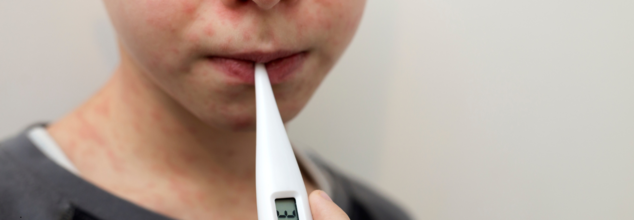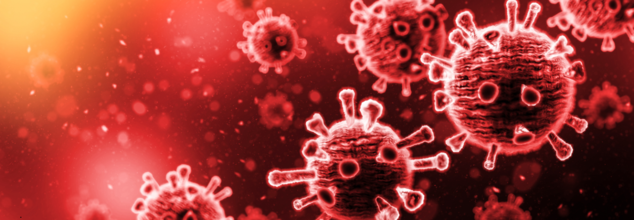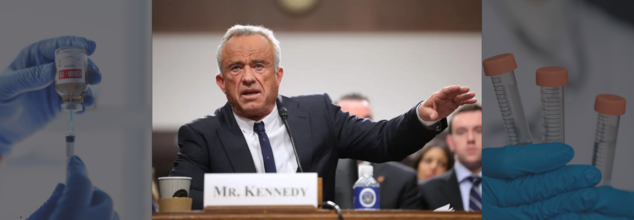- Health Conditions A-Z
- Health & Wellness
- Nutrition
- Fitness
- Health News
- Ayurveda
- Videos
- Medicine A-Z
- Parenting
- Web Stories
Measles Outbreak Update: Pennsylvania And Michigan Report An End, While Cases Slow Down In Many States

Credits: Canva
The Unites States reported 122 new cases of measles last week, which has brought the national total to 1,168 in 2025. This data is released by the Centers for Disease Control and Prevention (CDC). While the outbreaks in Pennsylvania and Michigan have officially ended, others across North America continue to unfold, including in parts of Texas, New Mexico, and Canada.
Resurgence of a Vaccine-preventable Disease
Measles is caused by a highly contagious airborne virus that spreads through coughing, sneezing, or even breathing near an infected person. It had been declared eliminated from the U.S. in 2000 thanks to widespread vaccination efforts. However, recent declines in vaccination rates and increased international travel have led to a resurgence. The disease can lead to severe complications such as pneumonia, encephalitis (brain swelling), and death, especially in unvaccinated individuals.
The best defense against measles remains the MMR (measles, mumps, rubella) vaccine, typically administered in two doses during early childhood. Yet, the U.S. has seen a growing number of vaccine exemptions, which health experts say undermine community immunity.
Texas Update
Texas experienced the country’s largest outbreak this year, with 742 cases reported across 35 counties. Most were concentrated in Gaines County, where a close-knit, undervaccinated Mennonite community accounted for more than half of the state’s total cases. Two unvaccinated children — aged six and eight — died in separate incidents earlier this year.
As of this week, fewer than 10 individuals in Texas are estimated to still be infectious. State health officials will now provide updates weekly instead of daily, suggesting the worst of the outbreak may be over.
Active Outbreaks In Other States
As per CDC if a state reports three or more related cases, it would be defined as an outbreak:
- New Mexico has reported 81 total cases and one death. Most are in Lea County.
- Oklahoma has 15 confirmed and three probable cases, though locations remain undisclosed.
- Colorado has logged 12 cases, including a seven-case outbreak tied to a Turkish Airlines flight in May.
- Illinois reports eight cases in its southern region and two in Cook County.
- Kansas has 71 cases, mostly in Gray County.
- Montana, facing its first outbreak in 35 years, has 17 cases.
- North Dakota now has 34 cases, all among unvaccinated individuals.
- Ohio has reported 34 cases in two separate outbreaks.
- Canada and Mexico See Major Outbreaks Too
Canada’s Ontario province has seen the longest outbreak in North America, with 2,009 cases and one death in a baby with congenital measles. Alberta has 761 cases. In Mexico, the state of Chihuahua reported 1,940 cases and four deaths.
Symptoms and Treatment
Measles symptoms start with high fever, cough, runny nose, and red eyes, followed by a spreading rash. Complications can be severe, especially for young children and immunocompromised individuals. There is no specific antiviral treatment; care typically focuses on symptom management and avoiding further spread.
MPOX Is Still A Public Health Emergency, Says WHO

Credits: Canva
The mpox outbreak continues to be a public health emergency, the World Health Organization (WHO) announced on Monday. The agency’s director-general also issued an updated set of temporary recommendations.
WHO had first declared the emergency in August last year, after a new strain of mpox spread from the severely affected Democratic Republic of Congo to nearby countries.
A public health emergency of international concern remains WHO’s highest level of alert.
What Is Mpox?
Mpox or monkey-pox is a viral disease in Africa. This was discovered by captive monkeys in 1958, after whom the disease was named in 1970. However, the name was later changed as it attracted many racist comments, especially on social media, where people wrote “the disease of monkeys” and associated it with the African people.
However, under the WHO guidelines, the naming of diseases must not drive any unnecessary negative impact on trade, travel, tourism or animal welfare, and avoid offending any cultural, social, national, regional, professional or ethnic groups. Thus, the name monkey-pox became the ‘m-pox’.
The outbreak led to WHO to declare an international public health emergency (PHEIC), from July 2022 to May 2023 in Congo. Now a new strain of the m-pox is infecting people in Kenya and poses a threat to many other African countries, including Congo.
How to detect it?
There are signs and symptoms of M-pox. They start to show within seven to 14 days of being infected. Therefore, for about a week a person may not know they have m-pox, and they can spread it by travelling.
The earliest signs are getting a fever, sweating and having chills through your body.
Other signs involve rashes, which start from a distant rash on the face and spread throughout the body. These rashes can be in different forms, sometimes a flat lesion, bumps, boils or scabs.
Other symptoms include swollen lymph nodes, migraine, muscle aches, fatigue, weakness and back pain.
How to prevent it?
This is a contagious infection and can spread by skin-to-skin contact. There are certain ways to prevent the spread. The first one is restricting your movement. Avoid going out in public, meeting people and interacting with animals.
Wear clothes that will prevent skin-to-skin infections. Cover yourself well so you do not spread the infection from your skin to other people.
Though there is no vaccination for the disease, doctors have noted that smallpox vaccination works on it to some extent.
Other ways are to keep hydrating yourself to get rid of the toxins from your body.
Doctors also prescribe medications like acetaminophen and ibuprofen to treat the pain and fever one may experience after being infected. Antiviral treatment like tecovirimat has been said to work on the infection too.
New COVID Variant XFG Surfaces in India with 163 Confirmed Cases

Credits: Canva
As per the latest data from the Union Health Ministry, India has crossed the 6,000 mark for total COVID-19 cases. 796 new cases were also reported in more than last 48 hours. As per the Indian SARS-CoV-2 Genomics Consortium (INSACOG), among these cases, 163 are from the newly emerging COVID-19 variant XFG.
What Is The XFG Variant?
As per a June 2025 Lancet Report, the recombinant XFG variant originates from LF.7 and LP.8.1.2 and harbours four key spike mutations including His445Arg, Asn487Asp, Gln493Glu, and Thr572Ile and has achieved rapid global spread following its initial detection in Canada.
The Lancet study also reveals that it is a descendant of the Omicron subvariant of the Coronavirus.
The XFG variant also displays “strong immune evasion,” which allows the virus to survive and spread as it manages to evade the body’s natural defences.
As of now, the new variant has been detected in Maharashtra, Tamil Nadu, Kerala, Gujarat, Andhra Pradesh, Madhya Pradesh, and West Bengal.
Who Could Be The Worst Affected?
Several groups in India face a higher risk during spikes in respiratory infections. These include older adults, people with underlying conditions such as heart disease, lung disorders, diabetes, high blood pressure, or obesity, as well as those with weakened immune systems like cancer patients and transplant recipients. Pregnant women, due to physiological changes, and children under five—particularly those who are unvaccinated—are also more vulnerable.
Health experts recommend that individuals in these categories take extra precautions: wear masks in public places, avoid crowded settings, stay indoors when possible, and maintain regular hand hygiene.
What Is The Plan Of Action?
Hospitals have been instructed to follow the updated ABC Guidelines 03, released in June 2023, for managing patients showing symptoms of COVID-19 or influenza. Anyone with signs of ILI (Influenza-Like Illness), ARI (Acute Respiratory Infection), or SARI (Severe Acute Respiratory Infection) must be tested. If a Rapid Antigen Test is negative, an RT-PCR test is mandatory. The health department has also directed that district RT-PCR testing facilities be used to their full capacity.
Though the preventive measures are not new, their importance has been renewed. Respiratory viruses often follow seasonal patterns, bringing repeated waves of infection. People with symptoms—or those at high risk—are strongly advised to avoid crowded, closed, and poorly ventilated spaces such as public transport, offices, malls, and theatres, particularly if not wearing a mask. While rapid testing is easily accessible in cities, limited access in rural areas highlights the need for wider distribution.
What Is Happening Globally?
On May 28, 2025, the World Health Organization (WHO) reported a global rise in SARS-CoV-2 activity, based on data from its Global Influenza Surveillance and Response System. Since mid-February, test positivity rates have been climbing steadily, reaching 11 per cent—levels last seen in July 2024.
The surge is most noticeable in the Eastern Mediterranean, Southeast Asia, and Western Pacific regions, driven by emerging subvariants such as LF.7, XFG, JN.1, and NB.1.8.1. Among these, NB.1.8.1 has drawn special attention and has been classified by WHO as a Variant Under Monitoring (VUM). By late April, 518 sequences of NB.1.8.1 had been reported from 22 countries, making up 10.7 per cent of global submissions.
While NB.1.8.1 appears to spread more easily, current evidence shows no increase in disease severity. Reported symptoms remain familiar—sore throat, fever with chills, nasal congestion, fatigue, and headache.
RFK Jr. Removes Entire CDC Vaccine Advisory Committee

Credits: Getty Images and Canva
Shocking to many, expected for more, the US Health Secretary Robert F Kennedy Jr on Monday removed every member of a scientific committee that advises the Centers for Disease Control and Prevention (CDC) on how to use vaccines. He has also pledged to replace them with his own picks.
This is the Advisory Committee on Immunization Practices (ACIP), from where 17 members have been removed. This step has been criticized by many physicians and public health groups.
It may come as a shock to many, but in all fairness, it was known that Kennedy was among the nation's leading anti-vaccine activists before he became the nation's top health official. While he has revealed that the members will be his own pick, he has not said who would he appoint. However, as per reports, this should convene in two week in Atlanta. It is also important to note that the entire roster of committee members were in fact, Biden appointees.
In an opinion piece published in the Wall Street Journal, Kennedy wrote: “Without removing the current members, the current Trump administration would not have been able to appoint a majority of new members until 2028. A clean sweep s needed to re-establish public confidence in vaccine science."
The reports say that the former panel members received an email on a late Monday afternoon that said that their services had been terminated without any reason. Many of whom had not served a full term.
While his steps are being criticized, they must not be seen as a shock as Kennedy had already taken the unusual step of changing COVID-19 recommendations without first consulting the committee.
As per Kennedy, the committee members had too many conflict of interests. However, as the US News reports, Dr Tom Frieden, who is the president and CEO of Resolve to Save Lives and former director of CDC said that Kennedy's actions were based on false conflict of interest claims and that they set a "dangerous and unprecedented action that makes our families less safe". As this step can significantly reduce vaccine access to many people.
“Make no mistake: Politicizing the ACIP as Secretary Kennedy is doing will undermine public trust under the guise of improving it,” he said in a statement. “We’ll look back at this as a grave mistake that sacrificed decades of scientific rigor, undermined public trust, and opened the door for fringe theories rather than facts.”
ALSO READ: What Are The Key Takeaways From RFK Jr.'s CDC Press Conference On Autism Report?
RFK Jr.'s Past Remarks On Vaccines
In a podcast interview, he said, "There is no vaccine that is safe and effective" and told FOX News that he still believes in the now long-debunked idea that vaccines can cause autism. In another 2021 podcast, he urged people to "resist" CDC guidelines on getting their kids vaccinated. "I see somebody on a hiking trail carrying a little baby and I say to him, better not get them vaccinated," he said.
His non-profit also led an anti-vax campaign sticker and he appeared next on the screen to a sticker that read: "If you are not an anti-vaxxer you are not paying attention," reports AP. He told the FOX News that "autism comes from vaccine". However, vaccination has indeed saved more lives.
After taking the charge of the office, Dr Peter Marks, one of the top US Food and Drug Administration (FDA)'s leaders and scientist in vaccine regulation had also been ousted. Several sources have also reported that his resignation was not voluntary, in fact he was reportedly told to 'resign or get fired'.
Stay Updated On CDC and RFK Jr. Here
© 2024 Bennett, Coleman & Company Limited

